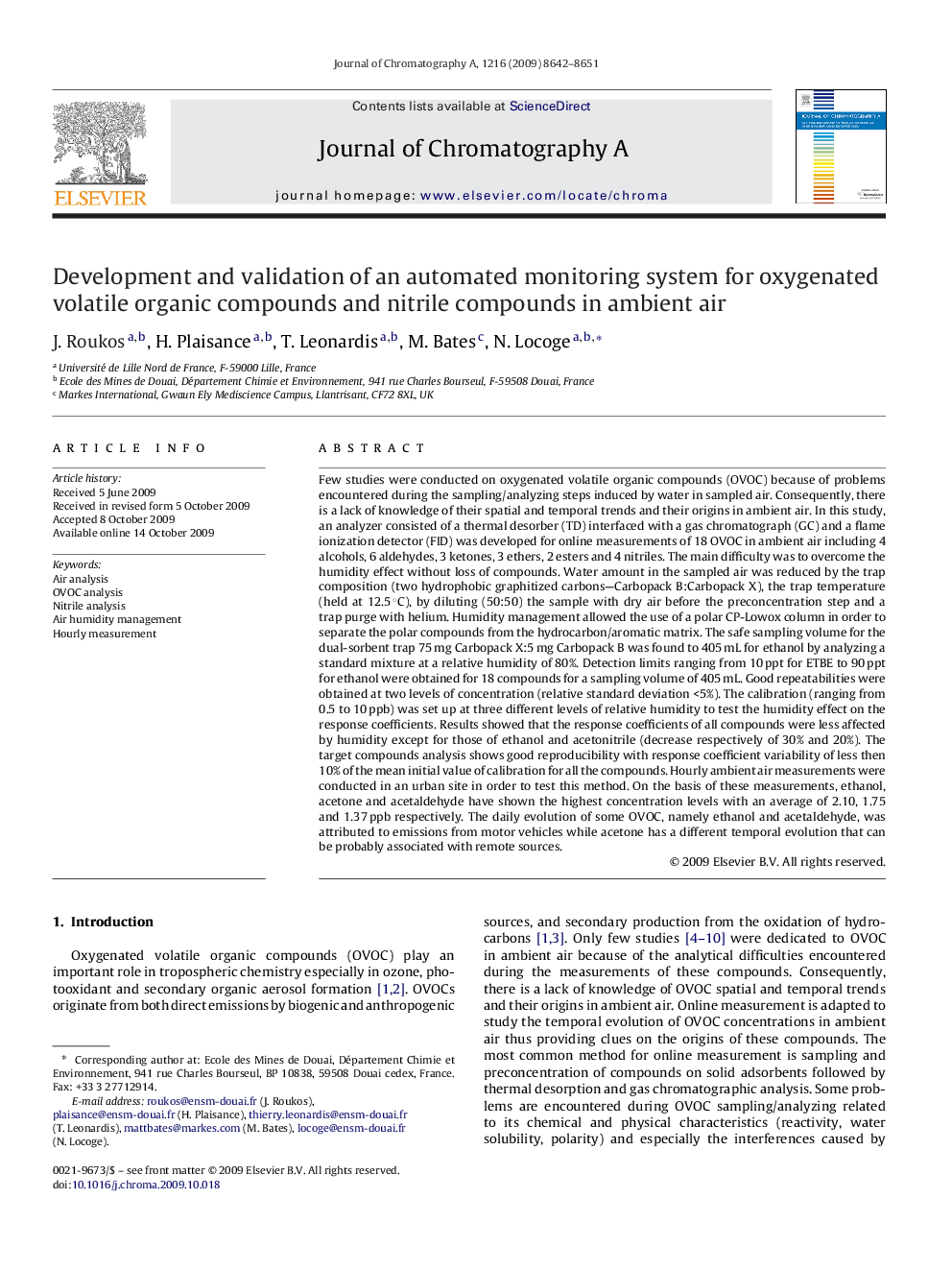| Article ID | Journal | Published Year | Pages | File Type |
|---|---|---|---|---|
| 1204519 | Journal of Chromatography A | 2009 | 10 Pages |
Few studies were conducted on oxygenated volatile organic compounds (OVOC) because of problems encountered during the sampling/analyzing steps induced by water in sampled air. Consequently, there is a lack of knowledge of their spatial and temporal trends and their origins in ambient air. In this study, an analyzer consisted of a thermal desorber (TD) interfaced with a gas chromatograph (GC) and a flame ionization detector (FID) was developed for online measurements of 18 OVOC in ambient air including 4 alcohols, 6 aldehydes, 3 ketones, 3 ethers, 2 esters and 4 nitriles. The main difficulty was to overcome the humidity effect without loss of compounds. Water amount in the sampled air was reduced by the trap composition (two hydrophobic graphitized carbons—Carbopack B:Carbopack X), the trap temperature (held at 12.5 °C), by diluting (50:50) the sample with dry air before the preconcentration step and a trap purge with helium. Humidity management allowed the use of a polar CP-Lowox column in order to separate the polar compounds from the hydrocarbon/aromatic matrix. The safe sampling volume for the dual-sorbent trap 75 mg Carbopack X:5 mg Carbopack B was found to 405 mL for ethanol by analyzing a standard mixture at a relative humidity of 80%. Detection limits ranging from 10 ppt for ETBE to 90 ppt for ethanol were obtained for 18 compounds for a sampling volume of 405 mL. Good repeatabilities were obtained at two levels of concentration (relative standard deviation <5%). The calibration (ranging from 0.5 to 10 ppb) was set up at three different levels of relative humidity to test the humidity effect on the response coefficients. Results showed that the response coefficients of all compounds were less affected by humidity except for those of ethanol and acetonitrile (decrease respectively of 30% and 20%). The target compounds analysis shows good reproducibility with response coefficient variability of less then 10% of the mean initial value of calibration for all the compounds. Hourly ambient air measurements were conducted in an urban site in order to test this method. On the basis of these measurements, ethanol, acetone and acetaldehyde have shown the highest concentration levels with an average of 2.10, 1.75 and 1.37 ppb respectively. The daily evolution of some OVOC, namely ethanol and acetaldehyde, was attributed to emissions from motor vehicles while acetone has a different temporal evolution that can be probably associated with remote sources.
